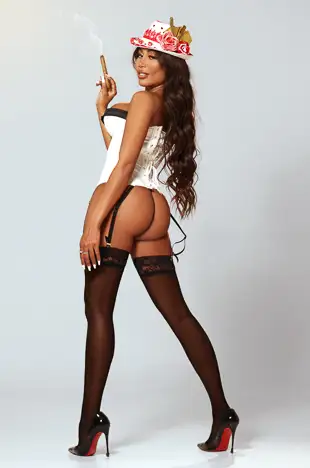Bow is a district in East End of London, England, in the London Borough of Tower Hamlets. It is a built-up, mostly residential district located east of Charing Cross. The name of the area was anciently Stratford, and "Bow" is an abbreviation of the medieval name Stratford-atte-Bow, in which "Bow" refers to a bridge built in the early 12th century. Bow is adjacent to the London 2012 Olympic Park, London, less than a mile away. A section of the district is part of the park. Bow is undergoing extensive urban re-generation including the replacement or improvement of council homes, such redevelopment and rejuvenation to coincide with the staging of the Olympic Games at nearby Stratford, London.
History
Bridges at Bowe
Stratforde was first recorded as a settlement in 1177, the name is derived from its Old English meaning of ''paved way to a ford''.Mills, D., ''Oxford Dictionary of London Place Names,'' (2000) The ford originally lay on the route of a pre-Roman era trackway at Old Ford about 600 metres to the north, but when the Roman eras decided on Colchester as their initial capital for their occupation, the road was upgraded to run from the area of London Bridge, as one of the first paved Roman roads in Roman Britain.[http://www.british-history.ac.uk/report.asp?compid=22742 'Bethnal Green: Communications', A History of the County of Middlesex: Volume 11: Stepney, Bethnal Green (1998), pp. 88-90] accessed: 15 November 2006 The 'paved way' is likely to refer to the presence of a stone causeway across the marshes, which formed a part of the crossing.
In 1110 Edith of Scotland, wife of Henry I of England, reputedly took a tumble at the ford on her way to Barking Abbey, and ordered a distinctively bow-shaped, three-arched bridge to be built over the River Lea, ''The like of which had not been seen before''; the area became known variously as ''Stradford of the Bow'', ''Stratford of the Bow'', ''Stratford the Bow'', ''Stratforde the Bowe'', and ''Stratford-atte-Bow''' (at the Bow)[http://www.hrionline.ac.uk/foxe/commentary/book12/topnotes/topnotes12_StratfordatBow.html The Humanities Research Institute - Historical alternative names for Bow, London] which over time has been shortened to Bow to distinguish it from Stratford, London on the County of Essex bank of the Lea.[http://www.eastlondonhistory.com/stratford%20to%20bow.htm How Stratford became Bow] (East London History) Land and Abbey Mill were given to Barking Abbey for the continued maintenance of the bridge, who also maintained a chapel on the bridge dedicated to Catherine of Alexandria, and occupied until the 15th century by a hermit. This endowment was later administered by Stratford Langthorne Abbey.[http://www.british-history.ac.uk/report.asp?compid=42750 'West Ham: Rivers, bridges, wharfs and docks', A History of the County of Essex: Volume 6 (1973), pp. 57-61] accessed: 14 November 2006. By 1549, this route had become known as ''The Kings Way''.
Responsibility for maintenance of the bridge was always in dispute, no more so than with the Dissolution of the Monasteries, when local landowners who had taken over the Abbey lands were found responsible. The bridge was widened in 1741 and tolls were levied to defray the expense, but litigation over the maintenance lasted until 1834, when the bridge needed to be rebuilt and landowners agreed to pay half of the cost, with Essex and Middlesex sharing the other. The bridge was again replaced in 1834, by the ''Middlesex and Essex Turnpike Trust'', and in 1866 County Borough of West Ham took responsibility for its upkeep and that of the causeway and smaller bridges that continued the route across the Lea. In 1967 this bridge was in turn replaced by the Greater London Council with a two-lane flyover spanning the Blackwall Tunnel approach road, the traffic interchange, the River Lea and some of the Bow Back Rivers. This has since been expanded to a four-lane road.
Religious life
]]
In 1311 Bow remained an isolated village, often cut off from St Dunstan's, Stepney church by flood. Permission was given to build a chapel of ease to allow the residents a local place to worship. The land was granted by Edward III, on the King's highway, thus beginning a tradition of ''island'' church building.
In 1556 during the reign of Mary I of England, and under the authority of Edmund Bonner, Bishop of London, many people were brought by cart from Newgate and burned at the stake in front of Bow Church, in one of the many swings of the English Reformation.[http://www.hrionline.ac.uk/foxe/single/book11/11_1570_2090.html John Foxe's Book of Martyrs] - The Martyrdome of Hugh Lauerocke & Iohn Apprice, at Stratford the Bow. An.1556. May. 15'' accessed: 18 Nov 2006
In 1719, the parish became independent of Stepney (parish) and St Mary Stratford Bow consecrated. The parish also included the Old Ford area which has also been known as North Bow.
Chaucer and Stratford-atte-Bowe
A convent of Benedictine nuns was established at the nearby Priory of St Leonards, in modern Bromley-by-Bow. Geoffrey Chaucer immortalised this Priory in his The Prioress' Prologue and Tale:
: ''Ther was also a nonne, a prioresse,''
: ''That of hir smylyng was ful symple and coy;''
: ''Hire gretteste ooth was but by seinte loy;''
: ''And she was cleped madame eglentyne.''
: ''Ful weel she soong the service dyvyne,''
: ''Entuned in hir nose ful semely,''
: ''And frenssh she spak ful faire and fetisly,''
: ''After the scole of stratford atte bowe,''
: ''For frenssh of parys was to hire unknowe''.[http://www.fordham.edu/halsall/source/CT-prolog-para.html Line 125. Chaucer: ''The Canterbury Tales''] accessed on 14 Nov 2006
This was a joking (Jill Mann, ''The Canterbury Tales'', Notes to the General Preface) reference to the Prioress having learned the distinctive Anglo-Norman[http://petescully.blogspot.com/2005/09/old-language-variety-anglo-norman.html Old Language Variety: Anglo-Norman] dialect of French language, from the Benedictine nuns. French still had the cachet of being the language of the royal court, but "English French" was by then considered rustic compared to the French of Paris. (''see Bromley-by-Bow'').
Goose Fair
Fairfield Road commemorates the Green Goose fair, held there, on the Thursday after Pentecost.[http://www.mernick.co.uk/thhol/villbow.html ''The Copartnership Herald'', Vol. I, no. 7 (September 1931)] accessed 14 Nov 2006 A ''Green Goose'' was a young, or mid-summer goose, but it was also a slang term for a cuckold or a 'low' woman.''A Dictionary of Archaic and Provincial Words, Obsolete Phrases, Proverbs'' James Orchard Halliwell-Phillipps pp. 416 (Smith, 1860) In 1630, John Taylor (poet), a poet wrote ''At Bow, the Thursday after Pentecost, There is a fair of green geese ready rost, Where, as a goose is ever dog cheap there, The sauce is over somewhat sharp and deare.'', taking advantage of the double entendre and continuing with other verses describing the drunken rowdy behaviour of the crowds.[http://www.anglistik.uni-bonn.de/research/CIRCE/Hypertext-Sample/Goose_Fair/Text.htm ''Green Goose Fair'', in ''The Newe Metamorphosis'' BL Add. MS 14826, ff. 234r-40v (University of Bonn)] accessed 5 Dec 2007 By the mid-19th century, the authorities had had enough and the fair was suppressed.
, about 1754, Bow Porcelain Factory (Victoria and Albert Museum no. C.144-1931)]]
Bow porcelain
During the 17th century both Bow, and the Essex bank, became a centre for the slaughter and butchery of cattle for the City market. This meant a ready supply of cattle bones, and local entrepreneurs, Thomas Frye and Edward Heylyn, developed a means to mix this with clay and create a form of fine porcelain, said to rival the best from abroad, and this became known as ''Bow Porcelain''. In November 1753, in ''Aris's Birmingham Gazette'', the following advertisement appeared:
''This is to give notice to all painters in the blue and white potting way and enamellers on china ware, that by applying at the counting-house at the china-house near Bow, they may meet with employment and proper encouragement according to their merit; likewise painters brought up in the snuff-box way, japanning, fan-painting, &c., may have an opportunity of trial, wherein if they succeed, they shall have due encouragement. N.B. At the same house a person is wanted who can model small figures in clay neatly.''
The ''Bow porcelain factory'' prospered, employing some 300 artists and hands, until about 1770, when one of its founders died, by 1776 all of its moulds and implements were transferred to another manufacturer at Derby. In 1867, during some drainage operations at the match factory of Messrs. Bell & Black at Bell Road, St. Leonard's Street, the foundations of one of the kilns were discovered*, with a large quantity of 'wasters' and fragments of broken pottery. The houses close by were then called China Row, but now lie beneath modern housing. Chemical analysis of the firing remains showed them to contain high quantities of bone-ash; thereby pre-dating the claim of Josiah Spode to have invented the ''bone china'' process.[http://www.british-history.ac.uk/report.asp?compid=22166 'Industries: Pottery: Bow porcelain', A History of the County of Middlesex: Volume 2: General; Ashford, East Bedfont with Hatton, Feltham, Hampton with Hampton Wick, Hanworth, Laleham, Littleton (1911), pp. 146-50] accessed: 18 November 2006 However, more recent investigations of documentary and archaeological evidence suggests the concern was located entirely to the north of the High Street and across the river.Adams, E. and Redstone, D. ''Bow Porcelain'' pp.231 (London 1991)
Bryant and May
In 1888, the ''London matchgirls strike of 1888'' occurred at the Bryant and May match factory in Fairfield Road. This was a forerunner of the suffragette movement fight for women's rights and also the trade union movement. The factory was rebuilt in 1911 and the brick entrance includes a depiction of Noah's Ark and the word 'Security' used as a trademark on the matchboxes. Match production ceased in 1979 and the building is now private apartments known as the Bow Quarter.[http://exploringeastlondon.co.uk/Bow/Bow.htm#Bowroad Exploring East London] accessed 27 Mar 2007
Suffragettes
Emmeline Pankhurst had begun the Women's Social and Political Union (WSPU), in 1903, with her daughters Christabel Pankhurst and Sylvia. Sylvia Pankhurst became increasingly disillusioned with the Suffragette movement's inability to engage with the needs of working class women, like the match girls. Sylvia formed her own breakaway movement, the East London Federation of Suffragettes#East London Federation of Suffragettes and based it at 198 Bow Road, by the church, in a Baker's shop. This was emblazoned with "Votes for Women" in large gold letters, and opened in October 1912. The local Member of Parliament, George Lansbury, resigned his seat in Parliament of the United Kingdom to stand for election on a platform of women's enfranchisement. Sylvia supported him in this and Bow Road became the campaign office, culminating in a huge rally in nearby Victoria Park, East London, but Lansbury was narrowly defeated in the election and support for the project in the East End of London was withdrawn.
Sylvia refocused her efforts, from Bow, and with the outbreak of World War I, began a nursery, clinic and cost price canteen for the poor, at the bakery. A paper, the Women's Dreadnought was published to bring her campaign to a wider audience. At the close of war, the Representation of the People (Amendment) Act 1918 gave limited voting rights to property owning women over the age of thirty, and equal rights were finally achieved ten years later.
Pankhurst had spent twelve years in Bow, fighting for women's rights. During this time, she risked constant arrest''One of Sylvia's first actions occurred when she climbed a cart, in nearby Bromley High Street, and commenced to speak. Unfortunately, no one listened, she picked up a rock and threw it through the window of Selby's Undertakers. Her colleagues smashed windows in nearby buildings, and were taken to Bow Police station. and spent a lot of this time in Holloway Prison, often on hunger strike. She finally achieved her aim, but along the way had alleviated some of the poverty and misery, and improved social conditions for all in the East End.
Railways
In 1843 the engineer William Bridges Adams founded the Fairfield Locomotive Works in Bow, where he specialized in light engines, steam railcars (or railmotors) and inspection trolleys, including the Bristol and Exeter Railway Fairfield steam carriage for the Bristol and Exeter Railway and the ''Enfield'' for the Eastern Counties Railway. The business failed and the works closed circa 1872, later becoming the factory of Bryant and May.
Bow was also the site of the headquarters of the North London Railway who opened their Bow railway works in 1853. There were also two stations in the area named Old Ford railway station and Bow railway station. During World War II the North London Railway branch from Dalston to Poplar through Bow was so badly damaged that it fell into permanent disuse. Bow railway station opened in 1850 and was rebuilt in 1870 in a grand style, featuring a concert hall that was and . This became ''The Bow and Bromley Institute'', then in 1887 the ''East London Technical College'' and a Salvation Army hall in 1911. From the 1930s it was used as the ''Embassy Billiard Hall'' and after the war became the ''Bow Palais'', but was demolished in 1956 after a fire.[http://www.subbrit.org.uk/sb-sites/stations/b/bow/index.shtml ''Bow'' (Disused stations, site record)] accessed 23 Oct 2007
Local government
Bow formed a part of the medieval parish of Stepney (parish) until becoming an independent parish in 1719. The parish vestry then undertook this responsibility, until a rising population created the need for the Poplar Board of Works, in 1855. This was superseded by the Metropolitan Borough of Poplar in 1900 until it, in turn, was absorbed into the modern London Borough of Tower Hamlets in 1965.''Guide to the Local Administrative Units of England, Vol. I'', F. A. Youngs 1979
Between 1986 and 1992, the name ''Bow'' was applied to one of seven neighbourhoods, to whom power was devolved from the council. This resulted in replacement of much of the street signage in the area, that remains in place. Bow West[http://domino.towerhamlets.gov.uk/web/CE_Members.nsf/vMbrByWd?OpenView&RestrictToCategory=Bow+West Bow West (ward) councillors] accessed 5 April 2008 and Bow East[http://domino.towerhamlets.gov.uk/web/CE_Members.nsf/vMbrByWd?OpenView&RestrictToCategory=Bow+East Bow East (ward) councillors] accessed 5 April 2008 are two wards formed in 2002 that incorporate Old Ford and the eastern end of Bethnal Green (to Grove Road, parts of which used to comprise Mile End New Town, north of the Mile End Road). Bow, in turn lost its territory, south of the Mile End Road, to neighbouring Bromley-by-Bow.[http://www.election.demon.co.uk/thbc/thbcmap.html Tower Hamlets Borough Council Election Maps 1964-2002] accessed 14 April 2007 These boundary changes are driven by the need to ensure a comparable number of electors for each ward within the modern borough. Bow is a district in East End of London, England, in the London Borough of Tower Hamlets. It is a built-up, mostly residential district located east of Charing Cross. The name of the area was anciently Stratford, and "Bow" is an abbreviation of the medieval name Stratford-atte-Bow, in which "Bow" refers to a bridge built in the early 12th century. Bow is adjacent to the London 2012 Olympic Park, London, less than a mile away. A section of the district is part of the park. Bow is undergoing extensive urban re-generation including the replacement or improvement of council homes, such redevelopment and rejuvenation to coincide with the staging of the Olympic Games at nearby Stratford, London.
Governance
Local council facilities are grouped around Roman Road market in Old Ford. The local library, now called an ''Idea Store'' is situated in Gladstone Place. A community and tenants' hall is nearby. Access to council services is dealt with by the ''Bow and North Poplar One Stop Shop'', in Ewart Place. Bow is a district in East End of London, England, in the London Borough of Tower Hamlets. It is a built-up, mostly residential district located east of Charing Cross. The name of the area was anciently Stratford, and "Bow" is an abbreviation of the medieval name Stratford-atte-Bow, in which "Bow" refers to a bridge built in the early 12th century. Bow is adjacent to the London 2012 Olympic Park, London, less than a mile away. A section of the district is part of the park. Bow is undergoing extensive urban re-generation including the replacement or improvement of council homes, such redevelopment and rejuvenation to coincide with the staging of the Olympic Games at nearby Stratford, London.
Geography
Bow is part of the London Borough of Tower Hamlets in East London. People often believe that to be a true Cockney you need to be born within earshot of the sound of Bow Bells and that these are the bells of Bow Church in the heart of Bow. However, the saying actually refers to St Mary-le-Bow, which is approximately 3 miles west on Cheapside, in the City of London. The other central feature of Bow is the bridge across the River Lea. Today, the bridge is a four-lane flyover, with both the Lea and Blackwall Tunnel approach passing beneath. The High Street has few active shops, with large-scale postwar housing located to the south. The island church remains as a useful turning point for buses. The Blackwall Tunnel approach roads´ expansion from the two-lane road existing at the beginning of the 20th century, to a six-lane urban motorway has occupied land, at the expense of industry. What remains on the eastern side of the road, is a canal side enclave of small businesses and warehouses, with a large supermarket located at the canal bridge to Three Mills.
Bow has become associated with the E postcode area, but a small part covers E15. Most of the E15 section is now changed to E20 because this part covers the Olympic park, this is why Tower Hamlets is an Olympic host borough, Bow contains a small part of the Olympic park. E3 includes the surrounding districts of Bromley-by-Bow, Old Ford, Mile End and the transpontine Three Mills in London Borough of Newham. The modern Tower Hamlets wards of west and east Bow are associated more with the postcode, than the settlement, and bounded by the Mile End Road, in the south; the River Lea, to the east; Victoria Park, East London to the north; and Grove Road, in the west.
The Hertford Union Canal links the River Lee Navigation and the Regent's Canal, running west from Old Ford Lock, along the south side of Victoria Park and linking at a basin, just to the west of Grove Road and the park, in the north of Mile End.
Nearby places:
*Mile End
*Old Ford
*Bromley-by-Bow
*Stratford, London
*Leyton
*Mile End Park
*Victoria Park, East London
*River Lea Bow is a district in East End of London, England, in the London Borough of Tower Hamlets. It is a built-up, mostly residential district located east of Charing Cross. The name of the area was anciently Stratford, and "Bow" is an abbreviation of the medieval name Stratford-atte-Bow, in which "Bow" refers to a bridge built in the early 12th century. Bow is adjacent to the London 2012 Olympic Park, London, less than a mile away. A section of the district is part of the park. Bow is undergoing extensive urban re-generation including the replacement or improvement of council homes, such redevelopment and rejuvenation to coincide with the staging of the Olympic Games at nearby Stratford, London.
Landmarks
Bow Church stands on the traffic island in Bow Road. Part of the church dates back to 1311. The base of the tower dates back to the late 15th century and the top of the tower was rebuilt after bomb damage in the World War II. ''Bow Church'' (St Mary's, Bow Road) is sometimes mistaken as the home of the ''Bow Bells'' which actually reside at St Mary-le-Bow Church on Cheapside in the City of London.
There is a local belief that this Statforde-atte-Bow was concerned with the legend of Dick Whittington. It is suggested that ''The Black Cat'' was in fact a barge travelling the River Lea
A statue of William Ewart Gladstone stands outside Bow Church. The statue was donated by Theodore H Bryant, part-owner of the Bryant and May match factory.[http://exploringeastlondon.co.uk/Bow/Bow.htm#Bowroad statue]
A memorial to George Lansbury (1859–1940) stands on the corner of Bow Road and Harley Grove, near 39 Bow Road, his family home in the constituency until it was destroyed in the Blitz.[http://www.historycooperative.org/journals/lab/87/shepherd.html Labour History (book review)] accessed 29 Mar 2007 It describes him as "A great servant of the people". Lansbury was twice Mayor of Poplar and also Member of Parliament#United Kingdom for Bow and Bromley (UK Parliament constituency). In 1921, he led the Poplar Rates Rebellion. His daughter-in-law, Minnie Lansbury was one of the 30 Poplar Councillors sent to prison and who died six weeks after leaving prison. A memorial clock to her is situated over a row of shops on Bow Road, near the junction with Alfred Street.[http://exploringeastlondon.co.uk/Bow/Bow.htm#Bowroad Minnie Lansbury Memorial Clock]
The original Metropolitan Borough of Poplar Town hall is situated on the south side of Bow Road, near the DLR station. It continues in use for registrations of births and marriages, as ''Bromley Public Hall''. It was rebuilt in the 1920s, and this Town Hall stands at the corner of Bow road and Fairfield Road in a dilapidated condition, now used as commercial offices. The latter Town Hall contains the ''Poplar Assembly Rooms'', now no longer used. ''The Builders'', by sculptor David Evans is a frieze on the face of the building, unveiled by Lansbury on 10 December 1938, these Portland Stone panels commemorate the trades constructing the Town hall, other panels symbolise the borough's relationship with the River Thames and the youth of Poplar.[http://pmsa.cch.kcl.ac.uk/UEL/TH038.htm Public Monument & Sculpture Association] date accessed 1 April 2007
In 2000 and 2001 the Big Brother (UK) house was located at Three Mills Studios in nearby London Borough of Newham, often reported as Bow because the studios are included in the E3 postal district. Bow is a district in East End of London, England, in the London Borough of Tower Hamlets. It is a built-up, mostly residential district located east of Charing Cross. The name of the area was anciently Stratford, and "Bow" is an abbreviation of the medieval name Stratford-atte-Bow, in which "Bow" refers to a bridge built in the early 12th century. Bow is adjacent to the London 2012 Olympic Park, London, less than a mile away. A section of the district is part of the park. Bow is undergoing extensive urban re-generation including the replacement or improvement of council homes, such redevelopment and rejuvenation to coincide with the staging of the Olympic Games at nearby Stratford, London.
Education
Old Ford, St.Agnes, Chisenhale,[http://www.chisenhale.towerhamlets.sch.uk/ Chisenhale Primary website] accessed 5 April 2008 Olga[http://www.olga.towerhamlets.sch.uk/ Olga Primary website] accessed 5 April 2008 and Malmesbury[http://www.malmesbury.towerhamlets.sch.uk/ Malmesbury Primary website] accessed 5 April 2008 primary schools are located in Bow, as is Bow School of Maths and Computing and Central Foundation Girls School on Bow Road.http://www.central.towerhamlets.sch.uk/cfgs/ Cherry Trees Schoolhttp://www.lgfl.net/lgfl/leas/tower-hamlets/schools/cherry-trees/ is a specialist primary school located at Campbell Road in Bow. Bow is a district in East End of London, England, in the London Borough of Tower Hamlets. It is a built-up, mostly residential district located east of Charing Cross. The name of the area was anciently Stratford, and "Bow" is an abbreviation of the medieval name Stratford-atte-Bow, in which "Bow" refers to a bridge built in the early 12th century. Bow is adjacent to the London 2012 Olympic Park, London, less than a mile away. A section of the district is part of the park. Bow is undergoing extensive urban re-generation including the replacement or improvement of council homes, such redevelopment and rejuvenation to coincide with the staging of the Olympic Games at nearby Stratford, London.
Transport
Routes London Buses route 8 and London Buses route 205 terminate at Bow Church. The nearest List of London Underground stations are Mile End tube station and Bow Road tube station. The nearest Docklands Light Railway station is Bow Church station. There are no longer any stations on the National Rail network in Bow.
Bow is served by bus and road, being situated at the List of road junctions in the United Kingdom of the A12 road (Great Britain) East Cross Route, and A11 road (Great Britain) Mile End Road. The proximity of tube stations mean that parking restrictions apply throughout the area.
Access to the Lee Navigation is via the tow-path at Three Mills. South leads to the River Thames, but the tow-path can often be blocked. North leads to ''Duckett's Cut'' (the Hertford Union Canal), which provides access to Victoria Park and joins the Regent's Canal near Mile End. Proceeding north along the Lea leads to Hackney Marshes. As this latter is within the 2012 Summer Olympics the tow-path may be closed unpredictably while building works are undertaken. Bow is a district in East End of London, England, in the London Borough of Tower Hamlets. It is a built-up, mostly residential district located east of Charing Cross. The name of the area was anciently Stratford, and "Bow" is an abbreviation of the medieval name Stratford-atte-Bow, in which "Bow" refers to a bridge built in the early 12th century. Bow is adjacent to the London 2012 Olympic Park, London, less than a mile away. A section of the district is part of the park. Bow is undergoing extensive urban re-generation including the replacement or improvement of council homes, such redevelopment and rejuvenation to coincide with the staging of the Olympic Games at nearby Stratford, London.
See also
*List of people from Tower Hamlets
*Bow Group (centre-right think tank that first met in Bow)
*Kingsley Hall, in nearby Bromley-by-Bow
*Bromley Hall, the Tudor era Manor House for Bromley and Bow Bow is a district in East End of London, England, in the London Borough of Tower Hamlets. It is a built-up, mostly residential district located east of Charing Cross. The name of the area was anciently Stratford, and "Bow" is an abbreviation of the medieval name Stratford-atte-Bow, in which "Bow" refers to a bridge built in the early 12th century. Bow is adjacent to the London 2012 Olympic Park, London, less than a mile away. A section of the district is part of the park. Bow is undergoing extensive urban re-generation including the replacement or improvement of council homes, such redevelopment and rejuvenation to coincide with the staging of the Olympic Games at nearby Stratford, London.
References and notes
Bow is a district in East End of London, England, in the London Borough of Tower Hamlets. It is a built-up, mostly residential district located east of Charing Cross. The name of the area was anciently Stratford, and "Bow" is an abbreviation of the medieval name Stratford-atte-Bow, in which "Bow" refers to a bridge built in the early 12th century. Bow is adjacent to the London 2012 Olympic Park, London, less than a mile away. A section of the district is part of the park. Bow is undergoing extensive urban re-generation including the replacement or improvement of council homes, such redevelopment and rejuvenation to coincide with the staging of the Olympic Games at nearby Stratford, London.
External links
*Bow West and Bow East wards are within the Borough's [http://www.towerhamlets.gov.uk/data/thp/channels/thp/web/your%2Blocal%2Barea%2Bpartnership/lap%2Barea%2B5/index.html Local Area Partnership 5]. [http://www.towerhamlets.gov.uk/data/thp/channels/thp/resources/lap+1-8+action+plans+2005-06.pdf Key areas of concern and action] relate to community safety, access to health care provision and activities for young people, especially in the Victoria Park area.
*[http://www.bowarts.org Bow Arts Trust]
Category:Districts of Tower Hamlets
Category:Areas of London































































































































































































